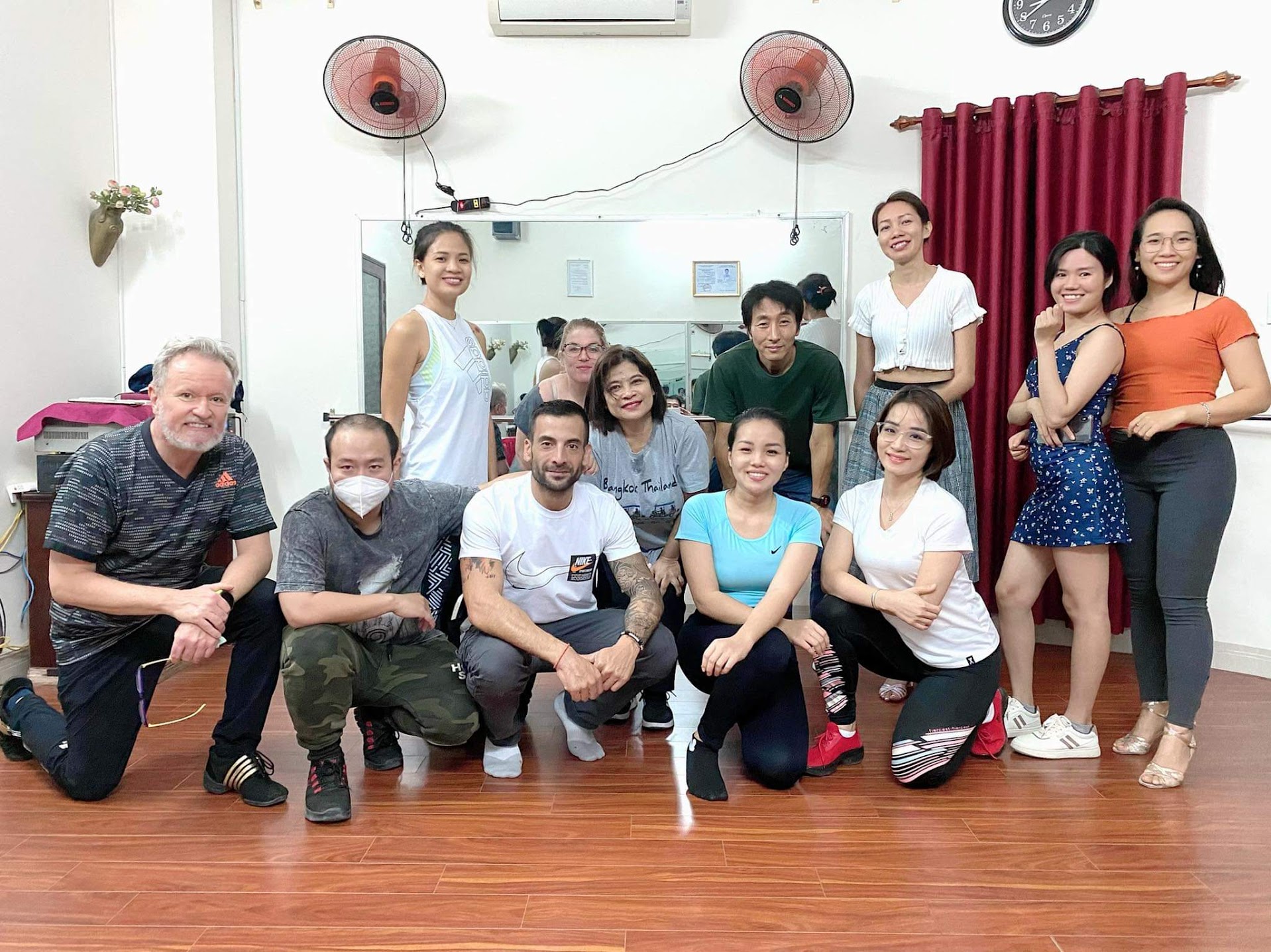In my classes you don’t only learn steps and moves, you learn how to be a good Salsa dancer. To accomplish that, we cover the following topics throughout all my classes (beginner – intermediate):
- Musicality
- Technique
- Steps & Moves
- How to Dance Solo
Musicality
Musicality is a concept not often taught in dance classes. It’s all about how to dance well to the music. Sounds obvious, but it isn’t. Most dancers dance, but they might not dance well to the music. They might dance off beat or dance to the wrong beat…or their dancing doesn’t reflect at all what’s going on in the music.
For beginners, musicality is mostly timing and can be as simple as being able to tell a Salsa from a Bachata or Kizomba, finding the beat of the music, finding the one (“the one” is the beat in the music where a measure starts…that’s when you start your step) and staying on the beat.
For intermediate levels musicality is how to interpret the music with your dancing. To do that, you have to listen to the music attentively (again, this sounds too obvious, but watching other dancers on the dance floor I can tell you that 50-70% of dancers do not listen to the music). You have to recognize changes in the music and react to the changes with your dancing. Example: many Salsa songs have solos of a particular instrument, for instance a drum or a piano solo. The dynamic of the music changes fundamentally during these solos. Just dancing through these changes continuing your partner work doing move after move wouldn’t do the music justice. Great dancers rather break away from their partners doing shines or other solo work and pick up their partner once the solo in the music is over.
Technique
Technique is how to move your body, how to make your dance “look Latin” and how to lead your partner well (or follow him). Many beginners “somehow” learn the basic steps of Salsa, but they don’t pay attention to the details and they start adopting bad habits that makes their dancing look strange. These bad habits are very difficult to eliminate later on. A common bad habit is to cut the pause in the Salsa basic step short. That means that you’re immediately off beat, even if you started on the right beat. That’s why I pay a lot of attention from the first class on to make sure that my students don’t let bad habits slip in.
The other important aspect of technique is how to properly lead and follow. A follower can dance any move, even if she has never done that particular move before, if she just uses proper following technique, and vice versa for leaders.
Steps & Moves
That’s the topic most dance classes teach: moves to make a dance interesting without having to do 100 basic steps in a row.
A common problem beginning leaders have is that they don’t have a sufficiently large repertoire of moves yet to confidently make it through a Salsa song, which can be 5 minutes long or more. I address this problem by teaching the Salsa Matrix, which is a method to create new moves while on the dance floor. You only have to remember a few basic moves. With the Salsa Matrix leaders can invent new, interesting moves on the fly while on the dance floor, which in turn increases their self-confidence.
On top of the basic step I also teach alternative steps that can be used when dancing solo or when deviating from the LA-style Salsa.
How to Dance Solo
If you watch advanced Salsa dancers, you’ll notice that they break away from their partner and dance solo about 30% of the time, depending on the dynamics of the song. Certain sections in a good Salsa song almost REQUIRE you to dance solo, for instance when there is a piano or drum solo or the dynamic of the song changes otherwise. Most beginner dancers just partner through these sections and lose a great opportunity to play with the music.
Most classes teach shines for solo dancing. Shines are small building blocks of steps you can do when dancing solo. While shines are useful, I actually rarely dance shines. I find them too inflexible to really go with the music during a solo. I rather listen to the music and try to reflect what’s going on in the music with my dancing.
Dancing solo can be an intimidating moment, especially for followers. First they’re taught to always follow the leader, now they’re on their own all of a sudden! They often look at you awkwardly, doing lots of basic steps, desperately waiting for you to pick them up again. They miss a big opportunity: finally they’re off the “leash”…they can do whatever they want! Take it all out, Baby!!!
In my classes I have my students practice dancing solo. I give them little hints what they can do if they end up feeling helpless. I also teach them WHEN to break away from their partner to do a solo and when to pick up their partner again.
How are my Salsa Classes Different?
My Salsa classes are different because I don’t only teach you a bunch of steps and moves, but I teach you how to become a good Salsa dancer that enjoys interpreting the music with their dancing and dances confidently, because they have a wide repertoire of moves at their disposal. 25 years of experience in Salsa dancing enables me to teach my students such that they experience a quick learning curve and become better and happier dancers.


